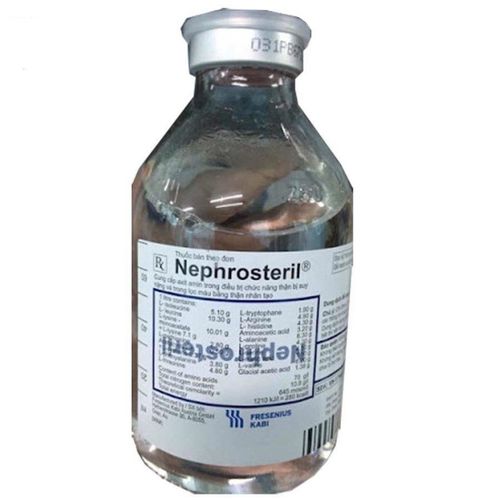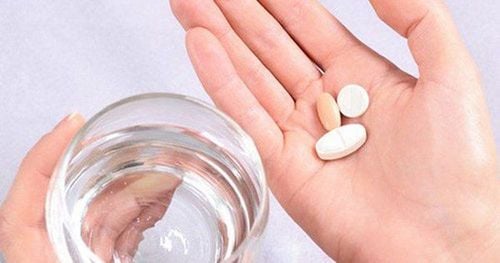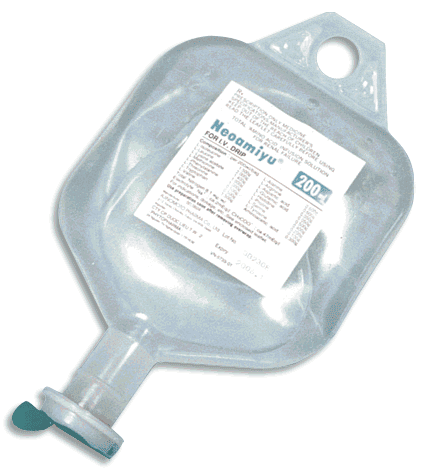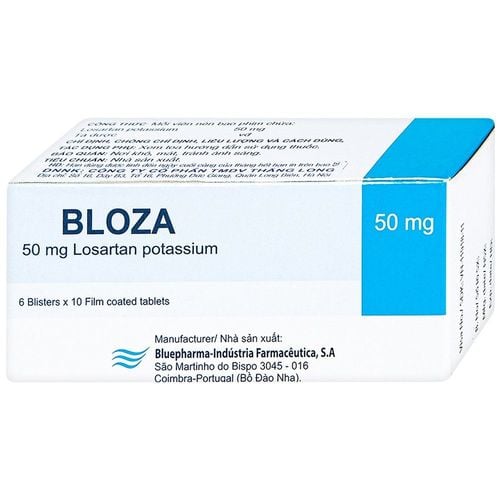This is an automatically translated article.
Kalimate 5g is used in the treatment of hyperkalemia in patients with acute and chronic renal failure, patients on dialysis. So, what are the effects of kalira 5g? What precautions should be taken when using this drug? Let's find out the necessary information about the use of Kalimate 5g through the article below.
1. What is Kalimate 5g?
Manufacturer: Central Pharmaceutical Joint Stock Company 2.
Packing: Box of 30 packs x 5g.
Dosage form: Powder.
Ingredients:
Calcium polystyrene sulfonate 5g. Excipients 1 capsule. What does kalira 5g do?
Effect of Calcium polystyrene sulfonate
Calcium polystyrene sulfonate is a polymer that exchanges cations with calcium ions. When taken orally or rectally, calcium is exchanged for potassium in the intestines, especially the colon. Each gram of Calcium polystyrene sulfonate has a theoretical in vitro exchange capacity of about 1.3 to 2 millimoles (mmol) of potassium (K+). However, in vivo, the actual amount of potassium exchanged will be less. Exchanged potassium accumulates in the gastrointestinal tract and is excreted in the feces. The closer to the end of the digestive tract (the large intestine), the higher the potassium concentration. Therefore, the length of time Calcium polystyrene sulfonate stays in the intestine is a determining factor in the effectiveness of Kalimate 5g. Therefore, oral medication will be more effective than rectal route. Calcium polystyrene sulfonate is insoluble in water and is not absorbed into the bloodstream orally due to its large molecular structure.
2. Uses of Kalira 5g
2.1 Indications Kalimate 5g is used in the following cases:
Hyperkalemia due to acute or chronic renal failure. Patients on dialysis have high blood potassium levels above 6.0-6.5 mmol/L. 2.2 How to use - Dosage How to use:
The drug is used in two ways: orally and rectally for patients who often vomit, have problems with the upper gastrointestinal tract. Patients with paralytic ileus can combine both routes to increase the effect of the drug.
+ Mix with filtered water to drink (not mixed with fruit juices containing potassium). If used for children, you can add sugar to make it easier to use.
+ Should sit while drinking to avoid inhaling airborne drug dust particles.
+ Should be used at least 3 hours apart from other oral medications.
Use rectally:
+ Mix with water or 10% dextrose solution, pump into the rectum after warming up to 37 degrees Celsius.
+ The drug must be kept in the body for at least 9 hours .
+ In case the drug leaks out, instruct the patient to sit in the knee-chest position: start from the crawling position, then bend the elbows, lower the head and chest to the floor, and keep the legs and buttocks higher. head.
+ After taking the medicine, the medicine must be washed from the rectum. For patients with a history of difficult elimination, the method of drug removal from the gastrointestinal tract should be used.
Dosage:
Follow the doctor's prescription. The recommended dosage is given as follows:
Oral:
+ Adults and the elderly: 3 packs a day, divided 3-4 times. Each time drink 1 sachet mixed with 15-20ml of water until completely dissolved.
+ Children: The appropriate initial dose is 1g/kg, mixed in the ratio of 3-4ml/1g, divided into several times a day. After the end of the acute phase, a dose of 0.5g/kg is used to maintain blood potassium levels.
Rectal route:
+ Adults and the elderly: 30g per day mixed with 150ml of water or 10% dextrose solution used as directed in the section on how to use.
+ Children: The appropriate initial dose is 1g/kg, mixed in the ratio of 5ml/1g, used as directed in the section on how to use. After the end of the acute phase, a dose of 0.5g/kg is used to maintain blood potassium levels.
+ Newborns: only used rectally with a dose in the range of 0.5-1g/kg.
Dosage for infants is very important, so it is necessary to have a doctor's prescription when using it. Overdose can lead to severe constipation in children.
2.3 How to handle missed dose, overdosage Missed dose: Medicines are prescribed and guided by qualified doctors and nurses, so it is unlikely that the phenomenon of forgetting medicine can happen.
Overdose:
Symptoms:
+ Feeling uncomfortable or confused.
+ Unable to focus.
+ Muscle weakness and poor reflexes lead to paralysis.
+ Difficulty breathing.
+ Faster heart rate.
+ Muscle cramps.
Treatment:
+ Use other electrolyte balancing drugs to rebalance calcium and potassium levels in the blood.
+ Use an enema or enema to get the medicine out of the body.
3. Side effects of the drug Kalira 5g
Some side effects may be encountered when taking the drug with the corresponding frequencies as follows:
Common:
Related to the pharmacological effects of the drug to lower blood potassium and increase blood calcium leading to clinical manifestations. Clinical: metabolic and nutritional disorders. Gastrointestinal disorders manifest: upset stomach, anorexia, nausea, vomiting, constipation, sometimes diarrhea. Faeces block when administered rectally. In children taking orally, foreign bodies have been reported. Uncommon:
Gastrointestinal stenosis, intestinal obstruction sometimes colitis, gastrointestinal ischemia, ischemia that can lead to bowel necrosis and perforation have been reported with sorbitol use. Decreased blood magnesium. Rare:
Respiratory, thoracic and mediastinal disorders: chronic bronchitis or bronchopneumonia due to inhalation of dust when administered orally.
If there are any adverse effects during the course of taking the drug, immediately notify the doctor/pharmacist for guidance on reasonable and timely management.
4. Drug interactions
The interactions with the drug Kalimate 5g have been specifically documented as follows:
Cationic donors: can reduce the potassium binding efficiency of Calcium polystyrene sulfonate. Sorbitol: Calcium polystyrene sulfonate should not be used concurrently with Sorbitol, which can cause gastrointestinal narrowing, intestinal ischemia and more severe complications such as gangrene and intestinal perforation. Antacids and laxatives that do not absorb cations such as magnesium hydroxide, aluminum carbonate, calcium carbonate, etc.: The cation exchange efficiency of Calcium polystyrene sulfonate may be reduced, and metabolic alkalosis may be caused when used. used together. Lithium: May reduce lithium absorption. Levothyroxine: May reduce absorption of levothyroxine. Digitalis drugs such as digoxin: cardiotoxic effects increase as potassium levels decrease and calcium levels increase. To avoid adverse interactions affecting the effectiveness of treatment and ensure safety, inform your doctor about all medications you are taking.
5. Note when using the drug Kalira 5g
Contraindications
Do not use Kalimate 5g in the following cases:
Hypersensitivity to the drug's ingredients. The patient has a plasma potassium concentration less than 5 mg/L. People prone to hypercalcemia: hyperparathyroidism, myeloma, metastatic cancer. Obstructive intestinal disease: partial or complete. Infants with reduced bowel movements, premature birth, low birth weight should consult a doctor before use. Note
Use on pregnant women and nursing mothers:
There are no adequate data to study the effects of Kalimate 5g on pregnant women and nursing mothers. Safety has not been established. Only use these objects when absolutely necessary.
People who drive and operate machines
Does not affect the ability to drive or operate machinery. Thus allowing use on these objects.
Storage
Store in a cool, dry place, away from direct light, at a temperature not exceeding 30 degrees Celsius. Keep out of reach of children. Never use after the expiry date printed on the package.
Please dial HOTLINE for more information or register for an appointment HERE. Download MyVinmec app to make appointments faster and to manage your bookings easily.













